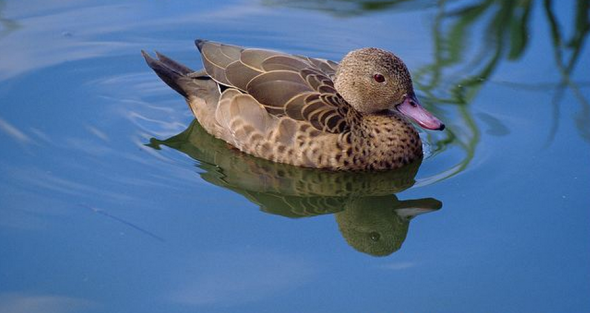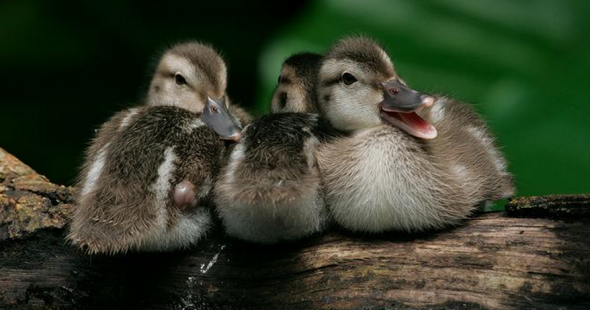Endangered Species Friday: Anas bernieri.
Endangered Species Friday - Anas bernieri
This Friday’s endangered species article I focus on my eighteenth “Madagascan” species of wildlife since establishing International Animal Rescue Foundation’s Endangered Species Watch Post one and half years ago. I very much doubt too that this will by mine or the teams last such species of Madagascan native animal to print on nearing extinction, simply because the island is rapidly being overcome by humans, habitat destruction and poaching.
Endemic only to the Africans island of Madagascar the the A. bernieri as the species is scientifically known was primarily identified back in 1860 by Dr Karel Johan Gustav Hartlaub (8 November 1814 – 29 November 1900) was a German physician and ornithologist.
Dr Hartlaub was born in Bremen, and studied at Bonn and Berlin before graduating in medicine at Göttingen. In 1840, he began to study and collect exotic birds, which he donated to the Bremen Natural History Museum. He described some of these species for the first time. Dr Hartlaub has been described by many leading ornithologists as an expert in bird wildlife and conservation and, has been ranked as one of few such experts that has identified over hundreds species of birds globally.
Listed as (endangered) the species is commonly known as the Bernier’s Teal or just Madagascar Teal. The species is uncommonly viewed within western Madagascar of which it can be found along the western coast and, north east. Bernier’s Teal is known to breed at the Menabe and Melaky on the central west coast, and at Ankazomborona on the far north-west coast. Between July and August (1993) the species was observed at Antsalova and Morondava of which a census recorded a total of some 200-300 mature individuals. Back in 1998 a small flock was observed in Tambohorano totaling some 60-70 mature individuals.
Furthermore in 1998 a new a new breeding colony numbering some 200-300 mature individuals was recorded in Ankazomborona. Meanwhile the population noted at Baie de la Mahajamba was estimated to be between some 100-200 mature individuals. (Please note that due to lack of census counts and close monitoring these population numbers above may differ from any future or now census counts) however the Durrel Wildlife Conservation Trust is helping to preserve one of the worlds most incredibly rare birds.
The total mean population count of which could be lower than the last census undertaken back in 2007 stands at a pathetic and measly 1,200 to 1,700 mature individuals today. However due to mass deforestation, pollution, habitat fragmentation and destruction and, poaching, Etc, its quite possible populations of the A. bernieri have plummeted way below the last 2002 and 2007 census count.
The Madagascar Teal is of the Anas genus and is a dabbling duck. Huge areas of wetlands are being drained or altered for human activities such as farmland, rice paddies and prawn ponds. Their wooded habitat is also being destroyed for timber which effects their breeding. Due to the increase of humans in their area, hunting has also increased for so called sport and meat.
Threats
Listed on (Cites) Convention on International Trade of Endangered Species Wild Flora and Fauna the species is listed on Appendix II of which is threatened by a large number of mostly human threats. The species is now extremely threatened throughout its breeding range, by extensive habitat loss and disturbance. The distribution of known sites suggests that the single subpopulation is being fragmented as areas of habitat become unsuitable.
The species has limited dispersal capabilities and isolation may result in the loss of genetic diversity. Furthermore it is threatened by virtue of being highly specific to a series of habitats - which are themselves threatened - throughout its annual cycle. Conversion of shallow, muddy water-bodies to rice cultivation has been so widespread on the west coast that in the non-breeding season the species now appears to be confined to the few suitable wetlands that are too saline for rice-growing, i.e. some inland lakes and coastal areas such as mudflats.
In 2004, during a dry-season survey in Menabe, this species was only found in saline wetlands. Pressures on coastal wetlands are exacerbated by the movement of people from the High Plateau to coastal regions, which is driven by the over-exhaustion of land. Mangroves are under increasing pressure from prawn-pond construction and timber extraction, which also leads to massively increased hunting. Subsistence hunting during the nesting season and the trapping of molting birds are major threats too. It is considered a delicacy by hunters and was found in markets in Sofia in 2011.
See more here on the video above. http://harteman.nl/pages/anasbernieri
In contrast, the breeding site at Ankazomborona is not threatened by aquaculture and there is little pressure from subsistence hunters, though there is some pressure from “sport hunters”. Breeding birds may suffer disturbance from human activity, such as the collection of crabs. The species is potentially in competition for the use of suitable nest-holes with the Comb Duck Sarkidiornis melanotos, parrots Coracopsis species and nocturnal lemurs, Lepilemur species and Cheirogaleus species, though lemurs are absent in mangroves. Breeding is from December to March. Diet consists of mainly insects.
In all its very likely that we will lose the Madagascan Teal within the wild in next to three to five years unless conservation efforts drastically and rapidly improve and, the Madagascar Ministry of Environment and Forests tackles poaching, habitat fragmentation, destruction and human interference sooner rather than later. I personally believe from my last visit to Madagascar back in 2013 its very unlikely the M. Teal or any other species listed as critically endangered will continue to thrive for years to come. Catastrophic habitat destruction on the island is threatening hundreds of over a hundred species of medium and large mammalians.
How can I help? The “Durrell Wildlife Conservation Trust” are currently undertaking amazing captive breeding programs of the Madagascan Teal that is known to be one of the worlds most rarest birds. You can help by supporting the Durrell Wildlife Conservation Trust and making a donation to their organisation that will help increase captive breeding colonies for later release back into the wild. Even if the species cannot be released back onto the island of Madagascar (should extinctions occur), reintroduction programs elsewhere will continue to keep this species alive for future generations to come. You never know the species may be coming to a home somewhere near you soon. Please donate and contact the D.W.C.T <here for further information.
Thank you
Dr Jose C. Depre
Environmental and Botanical Scientist.
International Animal Rescue Foundation Africa.
For further information or if you’d like to help in upcoming events this year or in the future please contact the Environmental team here today. [email protected]







Thank you for your reply, should it merit a response we will respond in due course. This site is owned by International Animal Rescue Foundation and moderation is used.